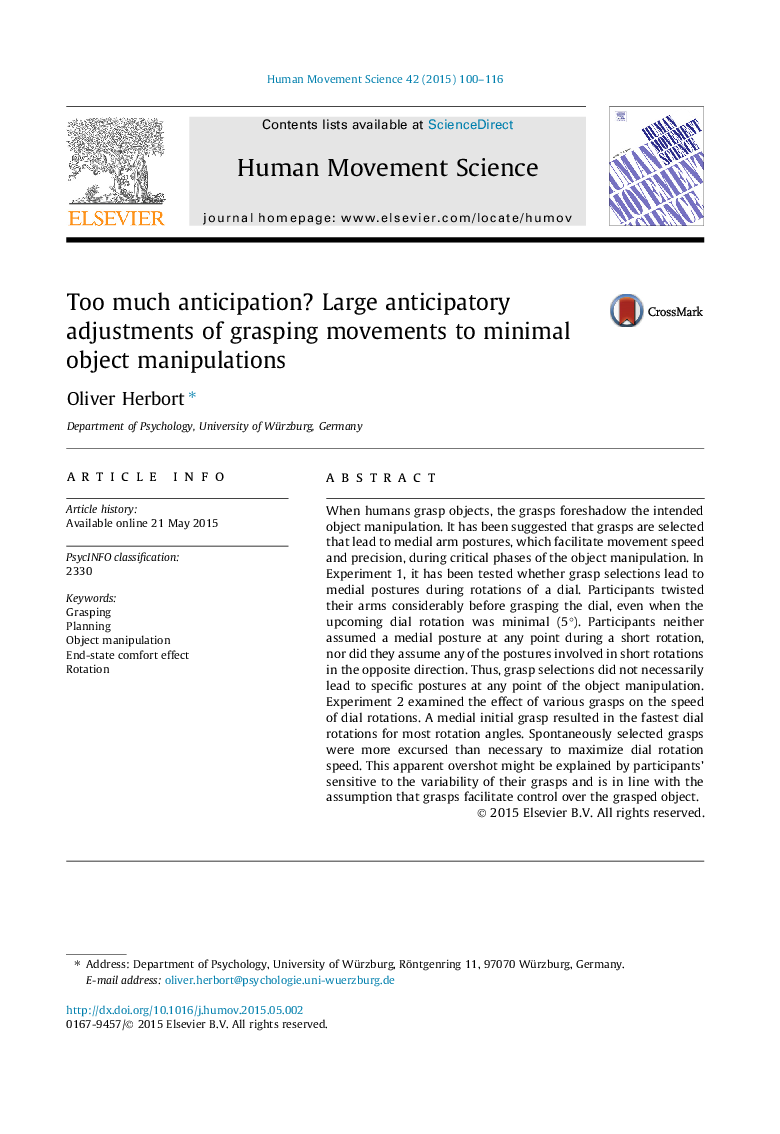| Article ID | Journal | Published Year | Pages | File Type |
|---|---|---|---|---|
| 928234 | Human Movement Science | 2015 | 17 Pages |
•How an object is grasped depends on the intended interaction with the object.•Even minimal interactions (e.g. 5° rotation) affect the grasp considerably.•Grasp selections do not lead to specific postures during the object manipulation.•Grasp selections reflect grasp variability and the object manipulation movement.•Grasp selections enhance control over the grasped object.
When humans grasp objects, the grasps foreshadow the intended object manipulation. It has been suggested that grasps are selected that lead to medial arm postures, which facilitate movement speed and precision, during critical phases of the object manipulation. In Experiment 1, it has been tested whether grasp selections lead to medial postures during rotations of a dial. Participants twisted their arms considerably before grasping the dial, even when the upcoming dial rotation was minimal (5°). Participants neither assumed a medial posture at any point during a short rotation, nor did they assume any of the postures involved in short rotations in the opposite direction. Thus, grasp selections did not necessarily lead to specific postures at any point of the object manipulation. Experiment 2 examined the effect of various grasps on the speed of dial rotations. A medial initial grasp resulted in the fastest dial rotations for most rotation angles. Spontaneously selected grasps were more excursed than necessary to maximize dial rotation speed. This apparent overshot might be explained by participants’ sensitive to the variability of their grasps and is in line with the assumption that grasps facilitate control over the grasped object.
